New indoor EV charging station in San Francisco offers a glimpse into the future
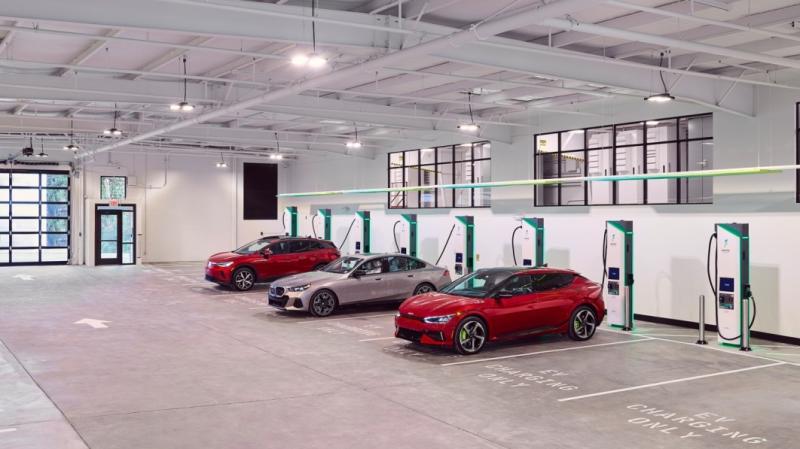

It's no gas station.
Electrify America has opened an indoor charging station that lets drivers relax in a lounge while their electric vehicle batteries are being juiced up.

My wife and I are homeowners, so we'd have no problem charging at home.
I can see a place for this setup... for a while, as we settle into the new tech. But I wonder if they will last.

Lets drivers relax or work in a lounge while their cars get juiced up
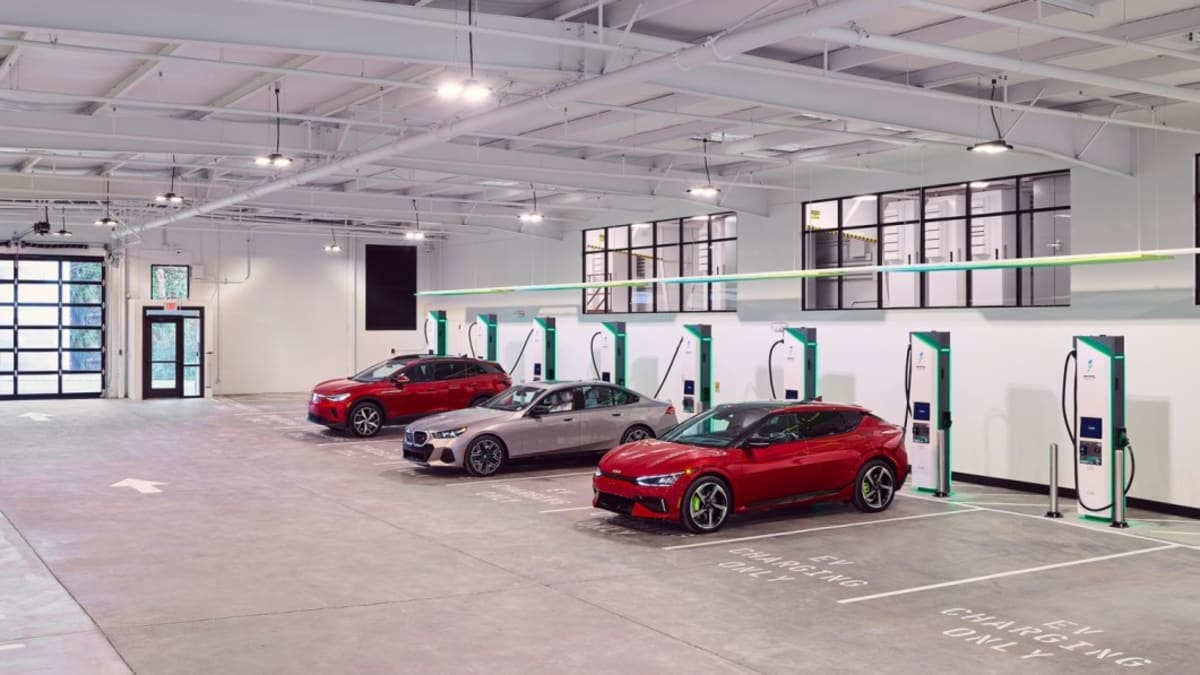
DETROIT — A couple of blocks from the San Francisco-Oakland Bay Bridge, Electrify America has opened an indoor charging station that lets drivers relax in a lounge while their electric vehicle batteries are being filled up.
The 20-plug direct-current fast-charging station, which opened for business Friday near downtown San Francisco, is part of a trend toward more appealing neighborhood stations, designed to serve EV owners who can't charge at their homes, as well as travelers or commuters who are low on juice.
It's also designed to allay fears among potential EV buyers that charging stations are too scarce or that they will have no safe place to wait as their vehicles charge, spending far longer than it takes for a gasoline fill-up. EV sales growth in the United States is slowing, in large part because of similar concerns among potential buyers.
On Santa Monica Boulevard in Los Angeles, Tesla is building a combination drive-in restaurant, movie theater and charging station. Mercedes has built an outdoor station with an indoor lounge at the automaker's U.S. headquarters near Atlanta. The company plans to construct at least 400 more as part of a $1 billion investment to deploy 2,500 charging plugs, mainly on the coasts, by the end of the decade. Some of the stations will offer lounges. Others will be partnerships with malls or travel centers.
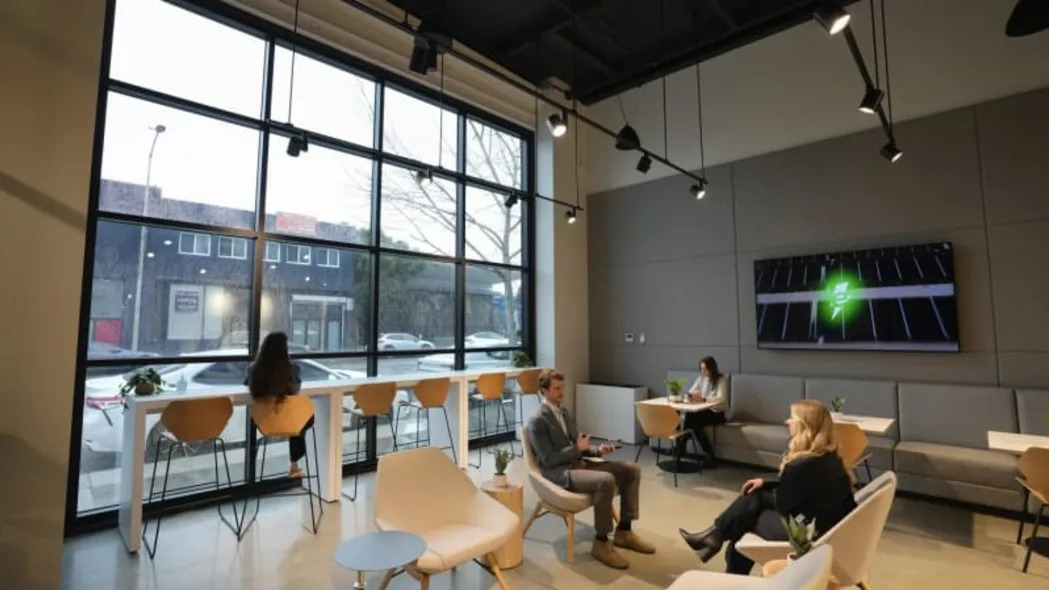

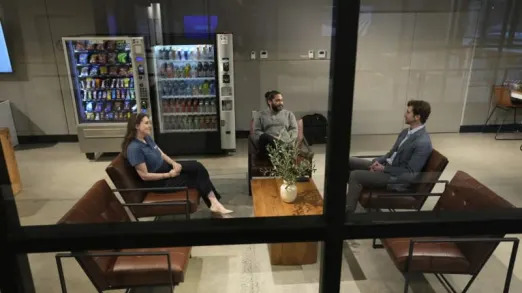
Electrify America's indoor station is intended to attract people who might be apprehensive about buying an EV, especially apartment dwellers in the nearby South Market neighborhood, said Robert Barrosa, the company's CEO.
"This is that big, indoor, premium experience that makes it enticing to to say, 'Hey, I can do this,' " Barrosa said.
Several convenience store chains have set up charging stations outside their businesses and offer food, restrooms and 24-hour service for EV owners.
But Barrosa said stations with nicer indoor space, including Wi-Fi and comfortable seating, are intended for a stay that's longer than a typical gas station fill-up. The San Francisco station, he said, will have an attendant around the clock for security and to handle waiting queues and answer questions from owners.
At a minimum, it normally takes about 20 minutes at a fast-charger to replenish a battery from a 10% charge to 80%, EV owners say. That compares with just a few minutes to fill up a car at a gas station.
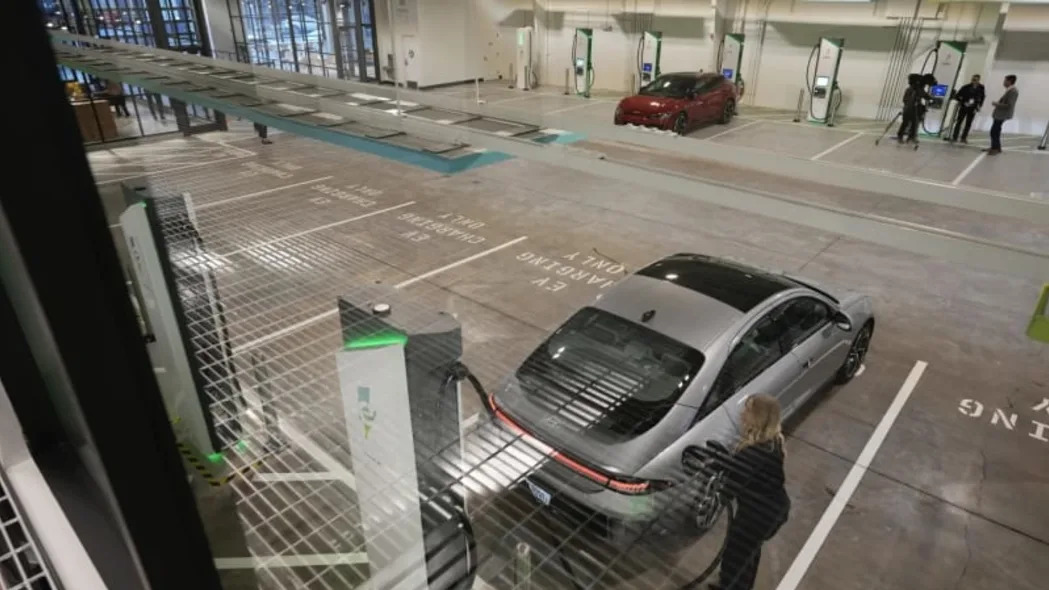
"We call it 30-minute retail as opposed to two-minute retail," said Rick Wilmer, CEO of ChargePoint, a company that builds and maintains charging stations for restaurants, stores and apartment buildings that use them to attract customers.
Convenience stores, Barrosa said, often have space for only a couple of charging plugs, meaning that there could be lines and longer waits for EV owners. Having 20 fast-charging 350-kilowatt plugs indoors is a confidence builder for owners, especially if they are in the neighborhood.
"People want the power, people want the speed," Barrosa said. "People want the technology."
Indoor stations also will help ease charging in poor weather conditions, a problem that arose recently when temperatures fell below zero in the Midwest.
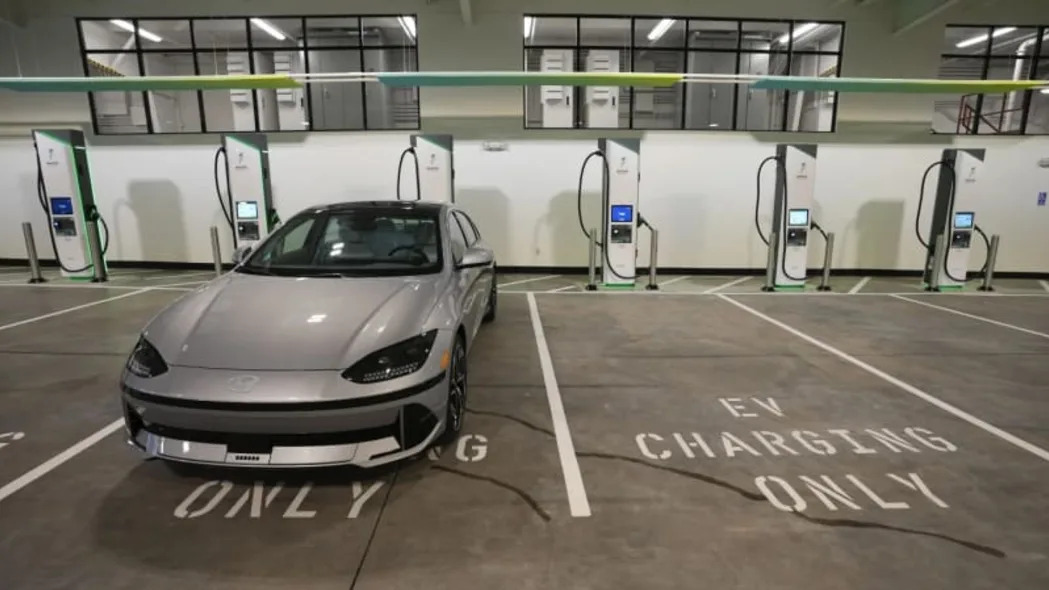
Still, among the skeptics is Bruce Westlake, president of the Eastern Michigan Electric Vehicle Association, who owns two Teslas. He said he doesn't necessarily think charging stations with more amenities will become a big attraction for most EV owners.
Likewise, another Tesla owner, Kevin Smith of Murfreesboro, Tennessee, said of the new stations, "They're kind of a cool novelty thing, but I don't see them being mainstream."
When he travels, Smith often uses convenience stores for charging his EV.
"People just want a snack and a restroom," he said.
Smith said he would prefer if Electrify America, the largest fast-charging network in the country that is open to all EVs, would simply build more stations and make them more reliable.
There are more than 61,000 charging stations with over 163,000 plugs in the United States. Most are lower-speed chargers that require hours to fill up vehicles.
Tesla, with more than 2,100 stations and over 24,000 plugs, has the broadest fast-charging network. But it isn't open to all EVs, at least not yet. Electrify America has 900 stations and over 4,000 charging plugs.
President Joe Biden has set a goal of 500,000 EV charging stations nationwide, aided by $5 billion from the 2021 infrastructure law to install or upgrade chargers along 75,000 miles (120,000 kilometers) of highway.
Westlake said that when he travels, he normally plans his charging stops so they're near restaurants and other businesses. If he's charging locally, he'll do grocery shopping while charging.
But he sees the larger "destination" charging stations in neighborhoods as a big plus for apartment dwellers who don't have an option to charge at home.
"I would be nervous about buying an EV if I didn't have a garage to charge in," Westlake said. "That first step when you buy an EV is unnerving, to say the least."
Having 24-hour service is important to him, too, especially when charging at night. Sometimes, businesses near charging stations are closed, and there's no place to go while charging.


Niche, I think.
I doubt if EV automobiles will ever have more than 20% of the US market. Most people want the reliability and convenience of gas driven cars. EV pickups are already a bust, and anything larger like delivery and over the road commercial trucks will probably never see widespread usage. Some small fleets might start experimenting with hydrogen fuel cells
'Never' is often proved wrong.
“I doubt if EV automobiles will ever have more than 20% of the US market.”
the technology is going to have to greatly improve for ev’s to be a significant portion of the US market. The day one can pull into a charging station and “refill” in a few minutes, and the day weather doesn’t greatly reduce range and lengthen charging times, and the day charging stations are as numerous as gas stations, and the day the political elites start upgrading our power infrastructure, is the day ev’s will be ready for prime time. But the problem of relying on an adversary like china will likely remain.
It will not take that. The technology is already practical for a significant portion of the US market. What is lacking is infrastructure. Recharge rate will need to improve (as you noted). More EVs will be available at lower prices. Cold weather will be less of a factor as battery technology improves.
The growth continues:
I disagree. Current, no pun intended, recharge rates make ev’s impractical for a significant portion of the US market. Hot temps also have a negative impact on ev range and battery health, so it’s not just cold weather ev’s struggle with.
again, reliance on an adversary like china will keep some away from ev’s.
You started with this:
This is referring to EVs being a significant portion of the US market. (They already are a significant portion of the US market; per the stats I posted.)
Now you invert your posit to this:
You just switched from EVs being practical for a significant portion of the market to EVs being impractical for a significant portion of the US market.
Yes, they are impractical for a significant portion of the US market. But they are also practical for a significant portion of the market.
Let's make this crystal clear. I posted a table showing that EV market share just hit 8.1% and 'electrified' hit 17.7%. That means they are considered practical by those shares of the market. Those are significant numbers.
The flipside is that 91.9% of the market arguably does not find the EV practical for them and 82.3% of the electrified market believes similarly.
So it is correct to say that EV and electrified is practical for a significant portion but a much larger portion does not see them (yet) as practical. And that makes perfect sense since EVs are an emerging, disruptive technology and the paradigm shift will take decades.
It looks like your definition of significant is different than mine.
No, that is not the problem.
It is obvious that EVs ARE NOT currently practical for a significant portion of the US market. On that we agree. And this is expected since the technology is still emerging, infrastructure is still growing, prices are still high, etc.
What you wrote first, however, is not true. EVs ARE currently practical for a significant portion of the US market. Look at the metrics in the table I provided. 8.1% is certainly NOT insignificant, and of course, neither is 17.7%.
What makes you think that battery technology will improve that much? Right now, they are costly to replace, heavy with little chance of getting lighter, hard to dispose of, and becoming an increasing fire risk.
Do you know something we don't?
8.1% and 17.7% are not significant numbers to me. It’s clear that they are for you.
There is a long-term mega trend that you seem to be ignoring. Technology continually improves. We keep getting faster, cheaper, smaller, more powerful, etc. in many dimensions of technologies such as chips, engines, speakers, motors, lights, and indeed batteries:
Those who bet on technology remaining in a stagnant holding pattern are almost certainly going to lose their bet.
I am sure that when gas powered cars first showed up on the scene, there were a lot of people that said the same thing.